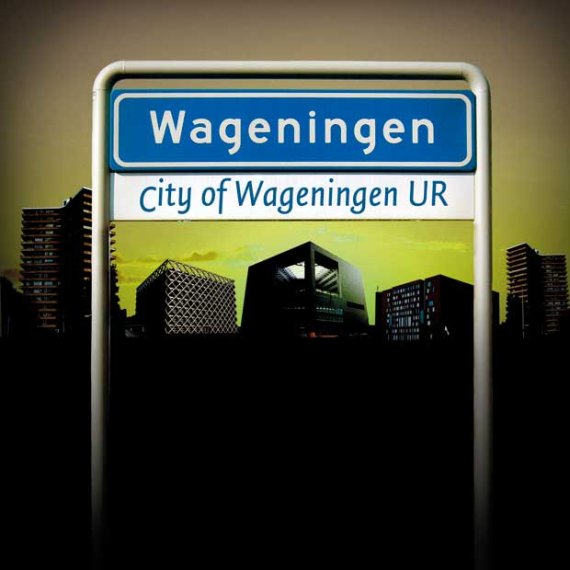In the recently published jubilee book on the history of Wageningen, Klep wrote an interesting chapter about the development of the town as a centre of agricultural learning: ‘From secondary school to world player’. This history has been a series of expansions and land purchases. ‘Land has been crucial,’ emphasizes Klep. And the shortage of land in particular, as the government bought it up for the university, research stations and institutes. It began as soon as the national agriculture college opened its doors in 1877 in the Bassecour in the town centre. One year later Duivendaal became Wageningen’s first campus, says Klep: ‘Straightaway, it was critical for the development of the town centre, which was now more or less closed off to the north. That made a natural development onto the Lawickse Allee impossible.’ And this is how it has gone, ever since. Over the century that followed the state bought one plot of land after another, until a full quarter of all the land in Wageningen was state-owned. ‘Land policy in Wageningen was in the hands of the minister, really,’ concludes Klep. ‘And for a long time that had an adverse effect on the relationship between the university and the town. There was always a third party involved that didn’t want to cooperate. The ministry of agriculture was dominated by farmers. And farmers do not sell land. Whatever the city wanted, it couldn’t be done. In my opinion the state played a major role in this.’
De Dreijen
The shortage of space after the war was ‘hopeless’, says Klep. Infill development was the only answer. Anywhere there was space, institute and departments of the university made their home. ‘The university was spread throughout the town: bits of it everywhere. And there were lectures at all the institutes so several times a day you saw hordes of students cycling from place to place. Students knew the town better in those days.’ The dream of getting everything together on one spot outside the town has always existed too. As soon as the Wageningen school became a higher education institute in 1918, plans were launched for the campus at De Dreijen. But because of the looming crisis they were only partially implemented. Some of today’s listed buildings did go up in that period though: Blaauw’s Ship, the Land Surveying department and the Microbiology building. De Dreijen itself only began to take shape after the second world war. But it never became a real campus. Now the campus dream is fast becoming a reality on de Born, thanks to the merger of the university and DLO in 1998. Meanwhile, the city’s space shortage is eased as one site after another becomes available for housing construction. At a high price, though, says Klep. ‘Wageningen’s identity as a university town is fast being destroyed. When I walk through the town centre now I am hard put to find any signs of Wageningen being a knowledge centre. Everything has gone. Wageningen has sealed itself off from the campus. A sorry sight, to Klep. ‘Because what do we get in exchange? The Kortenoord neighbourhood and soon another one at De Dreijen. Garden suburbs, but I don’t think these are the facilities the town needs. The nice thing about a university town is the meeting of different worlds. You need the town for that. A campus is no substitute for a town. But maybe I’m too much of a romantic.’

